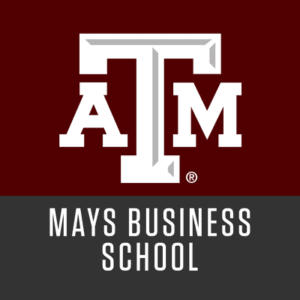The Texas A&M Masters in Finance program used to be exclusively for TAMU undergraduate students. A few years ago the program was opened up to outside students and a lot has changed since then. With the addition of a number of other MSF programs in Texas, combined with the energy industry and overall state economy, Texas based MSF programs are as popular as ever. With this in mind, I wanted to update everyone on the Texas A&M MSF program and all the changes that have happened since I last posted.
2018 Class Profile
| Class Size | 44 |
| Mean GPA | 3.5 |
| Mean Quantitative GRE/GMAT Percentile | 72% |
| Percent International | 9%* |
| Percent STEM Undergraduate Majors | 64% |
| Work Experience Including Internships | <12 months |
| Texas A&M Undergrad | 84% |
The class is a pretty conservative size for a school this big. Also, the percentage of international students for the 2018 class is not the standard, so do not let this very low percentage dissuade anyone from applying.
Admissions
- Min. Quant GMAT/GRE – 50th percentile
- Min. TOEFL/IELTS – 105/7.0
- Min. Undergrad GPA – 3.0
- Interview by invitation only
- Letters of Reference – Two required; at least one academic
The program is designed for non-finance undergraduates, so please keep that in mind. Also, keep in mind that currently, the program is on rolling admissions for anyone applying.
Academics
The program is a 36 credit hour degree, with 27 credit hours required and 9 credit hours of elective classes. This allows students to focus on an area of study that particularly interests them. The program also allows students to focus on a career path, with three options: A traditional corporate finance career path, one for STEM students and another for those who are looking to work on Wall Street.
Tuition
The program charges in-state tuition of $39,000 and out of state tuition of $44,000 (but students receive scholarships to bring the cost down to $39,000, the same as in state). Both are very reasonable when compared to other programs. One thing to note is that there is a 2-year program option, mainly for international students. This would obviously incur additional costs.
Placements & Advisory Board
I couldn’t find specific a specific placement report, but I did find a combination of recent placements and companies that are on the advisory board for Texas A&M. The list includes some impressive names, both in and outside of Texas. Below is a small selection of them.
In speaking with admissions, placements were over 90% within 3 months of graduation.
- Allegiance Bank
- BBVA
- BHP Billiton
- Citi
- ConocoPhillips
- Deutsche Bank
- Ernst & Young
- General Motors
- Halliburton
- PricewaterhouseCoopers
- Prudential Capital Group
- Stifel/Keefe, Bruyette & Woods
- USAA
- Wells Fargo
All in all, the Texas A&M Masters in Finance program has developed nicely into a MSF program that anyone looking for a school in Texas should apply to. The schools brand and reputation is very well regarded and the cost, ability to specialize, and placements & advisory board all make this program highly competitive with all the other top MSF programs.
Here is a link to the Texas A&M Masters in Finance Program



